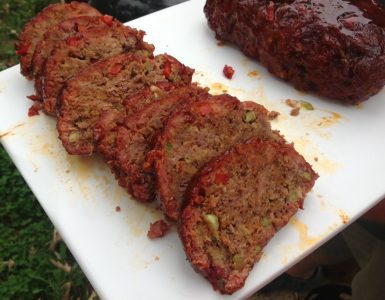Those dates on food packaging aren’t about expiration, but quality
Have you ever reached for a jar of barbecue sauce in the pantry and realize it’s past the date printed on the package? Or maybe you’ve found a shelf or refrigerated bin full of discounted goodies at the grocery that’s nearing the printed date.
Once that date has passed, does that mean the food has expired and you shouldn’t eat it?
The answer isn’t a simple one, but we can help you understand a little better what those dates mean on the packaging.
What does that date really mean?
It all comes down to what that date means. You can find these dates on the lid, label or somewhere else on the package. The date will, in many cases, be paired with the text “Best If Used By” or “Best By.” 
That date does not signify when the product has expired, the Food and Drug Administration explains. The FDA only requires a “use by” date on infant formula — this is to ensure “the formula contains not less than the quantity of each nutrient as described on the label,” according to the U.S. Department of Agriculture.
Don’t waste food
However, the FDA says consumers often wrongly view the dates as the end date for foods, leading to billions of dollars worth of food being mistakenly thrown out.

When it comes to date labeling, it’s guidance for “how fast to consume [the] food before the quality deteriorates,” said Abby Snyder, an associate professor of food science at the Cornell College of Agriculture and Life Sciences.
“It doesn’t mean that the product is necessarily ‘bad’ or going to make you sick,” said Andy Hirneisen, a senior extension educator and leader of Penn State Extension’s Retail and Consumer Food Safety Team. “It’s just that the quality is going to suffer after that.”
Quality changes could include the product separating or “spoilage microbes” that could make your food taste different, Snyder explained, but it “doesn’t make the food unsafe.”
When is food beyond safe eating?
The USDA explains that if the date passes while the food is in your home, the food “should still be safe and wholesome if handled properly until the time spoilage is evident.”
Signs of spoilage include “an off-odor, flavor, or texture due to naturally occurring spoilage bacteria,” the USDA says, adding that “if a food has developed such spoilage characteristics, it should not be eaten.”
Many foods include guidance on how they should be stored. Ketchup labels recommend refrigerating after opening (though you don’t have to do that). The same can be said for butter, such as on the packages below. Manufacturers may tell you to keep an item frozen before cooking, like a pizza. Others, such as bbq rubs, may require being stored in a “cool, dry place” to avoid caking.
When food is not stored based on the advised guidance, bacteria can grow faster and quality can be impacted, the USDA notes.
Check for spoilage
Ultimately, if you grab a jar of barbecue rub or a bottle of marinade and notice that you’re a day beyond the date label, that doesn’t mean it has to go into the trash bin. As the USDA and the FDA state, you’ll just need to check if the food is still of good quality or whether it has any spoilage bacteria.

The USDA also has a tool, the FoodKeeper App, that outlines storage guidance to “maximize the freshness and quality of items.” This includes a time span in which the food should be consumed as well as where to best store it.
Date labels were widely adopted by manufacturers in the 1970s to answer consumers’ concerns about product freshness. Since 2019, the Food and Drug Administration, which regulates around 80 percent of U.S. food, has recommended that manufacturers use the labels “best if used by” for freshness and “use by” for perishable goods, based on surveys showing that consumers understand those phrases.
So next time you see those dates on your purchases from the grocery, you have a better understanding of what they mean.
Happy Grilling!
— From The Associated Press













Add comment